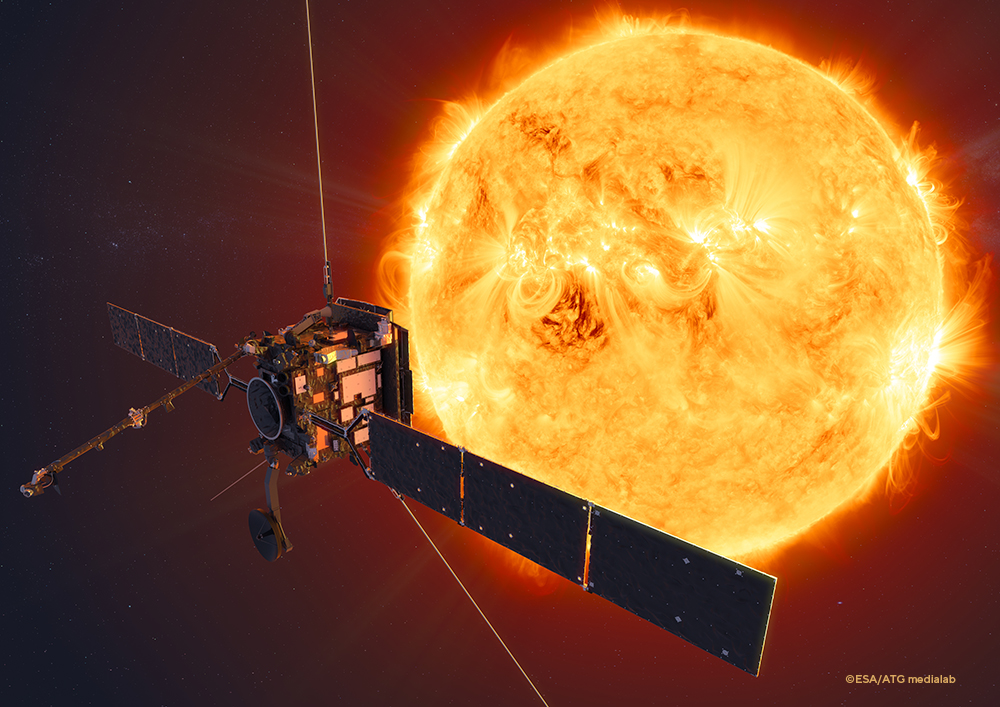Space weather is an important research field of our time. So far, we know very little about this phenomenon, which can also have an impact on our earth. The "weather" in space is triggered by the sun, that's for sure. Eruptions there release highly charged particles that are transported to our planet by "winds". The auroras at the north and south pole are a result of this. However, the particles also endanger satellites in space or even our digital infrastructure here on earth.
That' s why it is even more important to research the influence of the sun on the heliosphere, in which the earth is located. Solar Orbiter, a space probe of the European Space Agency (ESA), is traveling in orbit for this purpose and is trying to get answers to the following questions:
- How is the solar wind driven?
- What effects do sudden solar activities have on the heliosphere?
- The sun is the most powerful particle accelerator in our solar system. What is the cause of this particle acceleration?
- And how is the solar magnetic field generated?
To be able to transmit all the information generated in space to the research team on earth, the probe was equipped with a main communication antenna. This is attached to a complex titanium carrier structure. The structure is highly critical for the mission, must be absolutely shock-resistant and able to withstand temperatures of +500°C to -270°C – because without the carrier structure and communication antenna, there is no space data on Earth!
That’s why the titanium carrier structure was welded using the electron beam technology. The material to be welded were 2 mm thin titanium sheets. After joining, there could be no residue gaps on it, as otherwise this could cause cracks. In addition, no seam correction could take place after the welding process due to the complexity of the structure and cleaning of the component was no longer possible. Using the process, the seams could be welded accurately, precisely, and carefully, and the required quality standards could be met.
We are pleased to have contributed a part to the exploration of space weather and are looking forward to further pictures and news from space.





